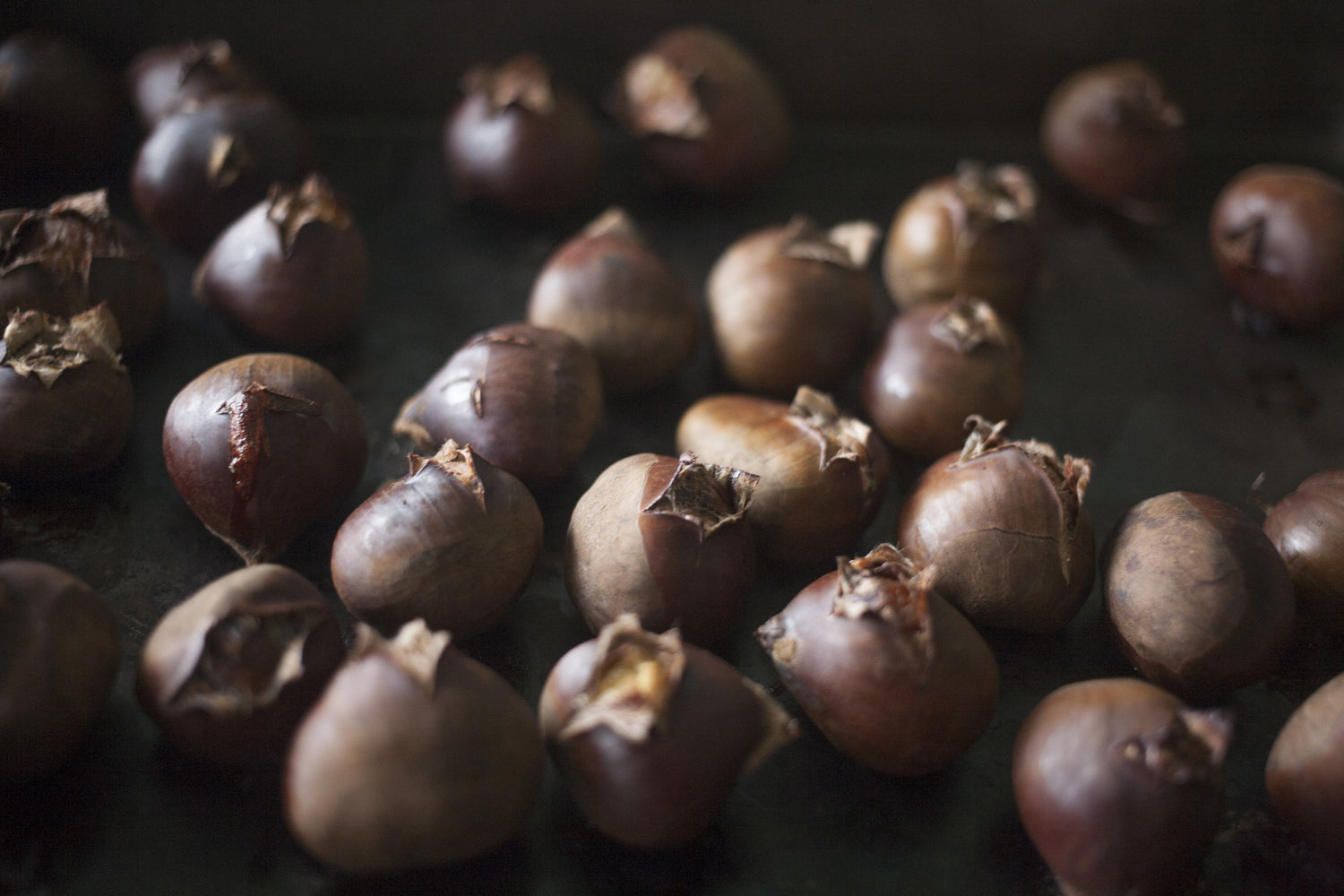
Perfect Roasted Chestnuts Every Time
Roasted chestnuts are an iconic element of the winter holiday season. We all sing about them, (in fact, nearly everyone from Garth Brooks to Twisted Sister has sung about them) but here in the United States, very few of us ever eat them. And fewer still have made them ourselves.

Of those I've met who have tried to roast chestnuts at home, most expressed frustration and disappointment- the chestnuts came out dry, or hard, they burned before they even softened, the whole batch was internally mildewed. They can be tricky, especially if you're unfamiliar with the nuts in their raw state.

So today, I thought I'd show you how to get a full batch of perfect chestnuts every time you roast.
Be Picky!
The first thing we need to do is select our chestnuts, and this is really important. The nutmeat of chestnuts is softer and moister than most other nuts. This makes them really susceptible to mold and mildew. So you need to be very careful when you're picking your batch. Don't just blindly scoop a bunch out of the bin; be that obnoxious shopper that picks nuts out of the bin one at a time and scrutinizes each one. Your kids will be embarrassed, but trust me- the payoff is worth it.

And here's what you need to look for. First, check the bottom of the shell. If you see any trace of green mold, toss that one back. It's not just exterior- that nut is definitely moldy.
Next, look at the tip. If the pointy part of the nut is starting to look pale and fuzzy, don't take that nut. This is a sign that mildew might be growing inside. Now, this sounds really obvious. "Why would I buy fuzzy food? Fuzzy always means bad!" But this doesn't look like mold fuzz. If you're not very familiar with chestnuts, this slightly fuzzy pale tip looks like a normal feature of the nut. Even many grocers don't realize it's a sign the nuts are bad internally, so you'll find many fuzz-tipped nuts in the bin. If it's only slight, the nutmeat might still be okay, but it's not worth the risk. Hold out for some really good ones.
A healthy and delicious chestnut will be firm and shiny with no sign of fuzz. In the below photo, the chestnut in the foreground is a good one; the one in the background is questionable.
Toil, but not much trouble
Okay, so now we've got our good-looking raw chestnuts. There's a little prep work involved before we start cooking. You need to cut open the shells or your chestnuts will explode during the roasting. (This sounds exciting, but really is just disappointing and a little messy.) I just use a paring knife for this. It's a little tough to cut through the shells, so I find the smaller the blade the less chance of accidents if the nut slips while I'm cutting. (And they're very smooth and hard, so watch out for slipping.)

Make sure you cut all the way through the shell and that you're not just scoring the surface. Most people cut an X shape into the shells. Not only does this make it easier to peel the shell away after they're roasted, but they look so pretty with the four corners peeling back to reveal the delicious roasted nutmeat inside.

Next is the crucial step that most people don't seem to know about. You've got to boil them before you roast them. Boil the nuts, shells and all for 15 minutes.

Then drain the water and lay the nuts out on a baking sheet, cut-side up. Now just bake at 425 fahrenheit for 12 - 15 minutes.

They're best eaten warm, but give them a few minutes to cool before you try to peel the shells off or you might burn your fingers.
Now, put on a little Nat King Cole and let Jack Frost nip at your nose!

Products
View all
